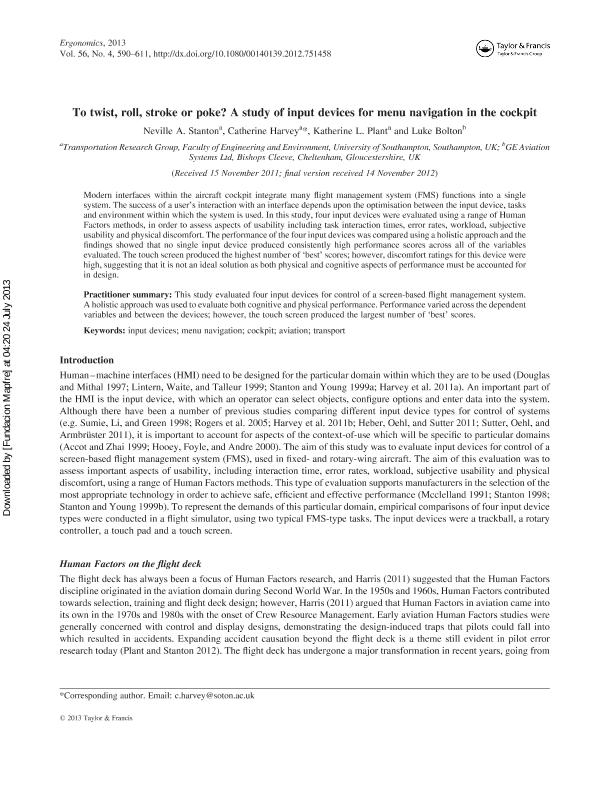To twist, roll, stroke or poke? A study of input devices for menu navigation in the cockpit

Contenido multimedia no disponible por derechos de autor o por acceso restringido. Contacte con la institución para más información.
| Tag | 1 | 2 | Valor |
|---|---|---|---|
| LDR | 00000cab a2200000 4500 | ||
| 001 | MAP20130022437 | ||
| 003 | MAP | ||
| 005 | 20130724153318.0 | ||
| 008 | 130724e20130401esp|||p |0|||b|spa d | ||
| 040 | $aMAP$bspa$dMAP | ||
| 084 | $a875 | ||
| 100 | 1 | $0MAPA20130009711$aStantona, Neville A. | |
| 245 | 1 | 0 | $aTo twist, roll, stroke or poke? A study of input devices for menu navigation in the cockpit$cNeville A. Stantona, Catherine Harveya, Katherine L. Planta |
| 520 | $aModern interfaces within the aircraft cockpit integrate many flight management system (FMS) functions into a single system. The success of a user's interaction with an interface depends upon the optimisation between the input device, tasks and environment within which the system is used. In this study, four input devices were evaluated using a range of Human Factors methods, in order to assess aspects of usability including task interaction times, error rates, workload, subjective usability and physical discomfort. The performance of the four input devices was compared using a holistic approach and the findings showed that no single input device produced consistently high performance scores across all of the variables evaluated. The touch screen produced the highest number of best¿ scores; however, discomfort ratings for this device were high, suggesting that it is not an ideal solution as both physical and cognitive aspects of performance must be accounted for in design. | ||
| 700 | 1 | $0MAPA20130009728$aHarveya, Catherine | |
| 700 | 1 | $0MAPA20130009735$aPlanta, Katherine L. | |
| 773 | 0 | $wMAP20100019818$tErgonomics : the international journal of research and practice in human factors and ergonomics$dOxon [United Kingdom] : Taylor & Francis, 2010-$x0014-0139$g01/04/2013 Volumen 56 Número 4 - abril 2013 , p. 590-611 |

